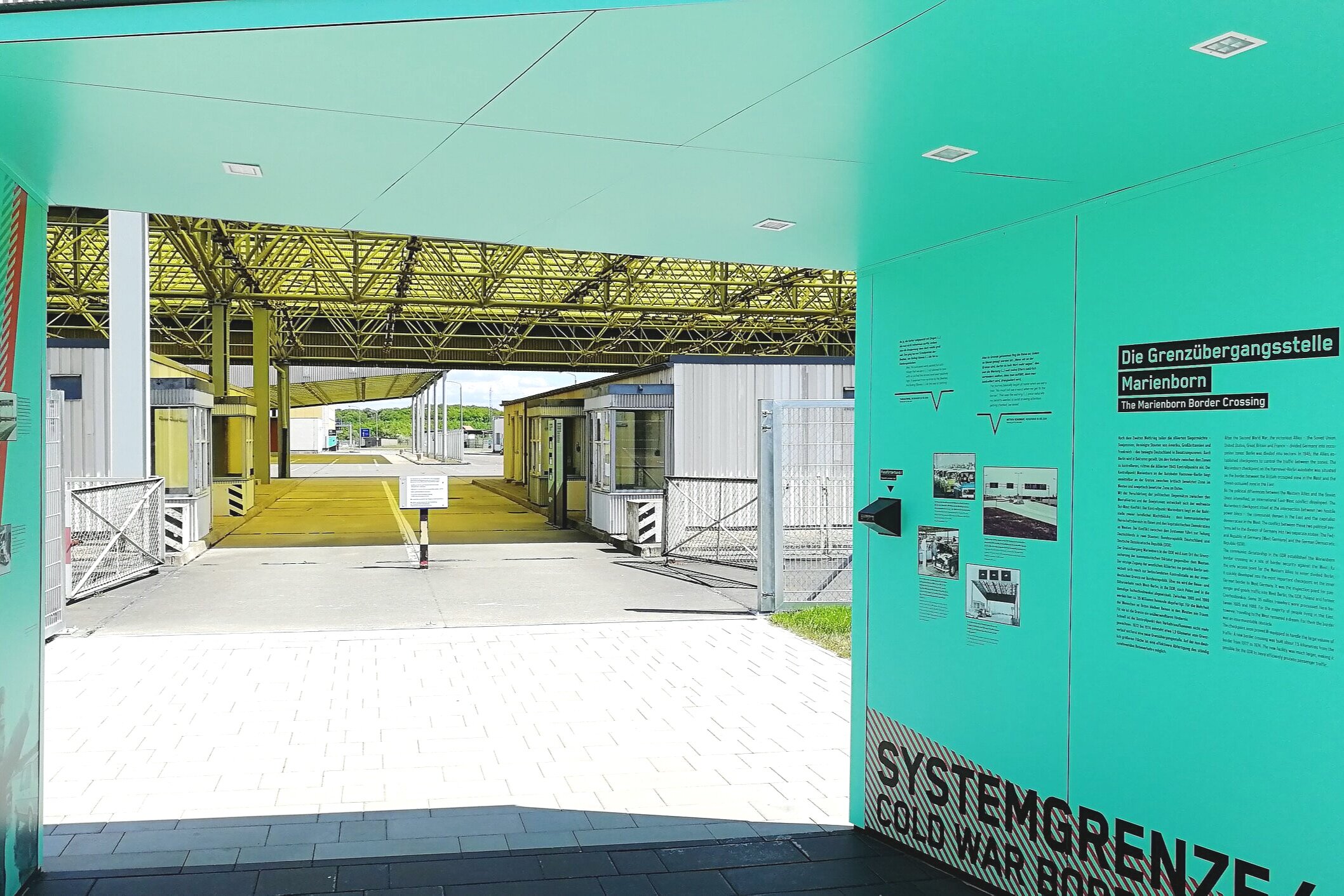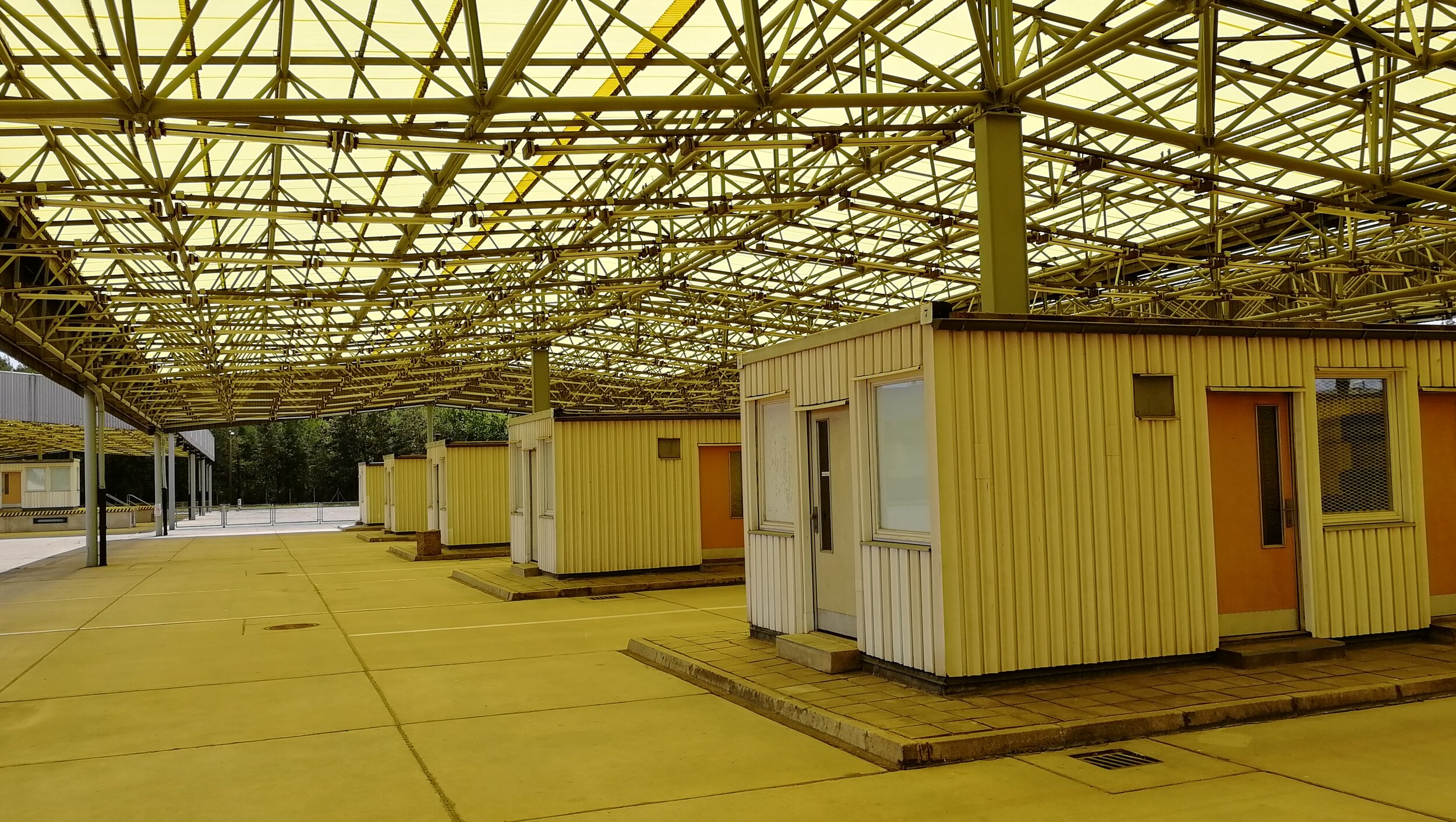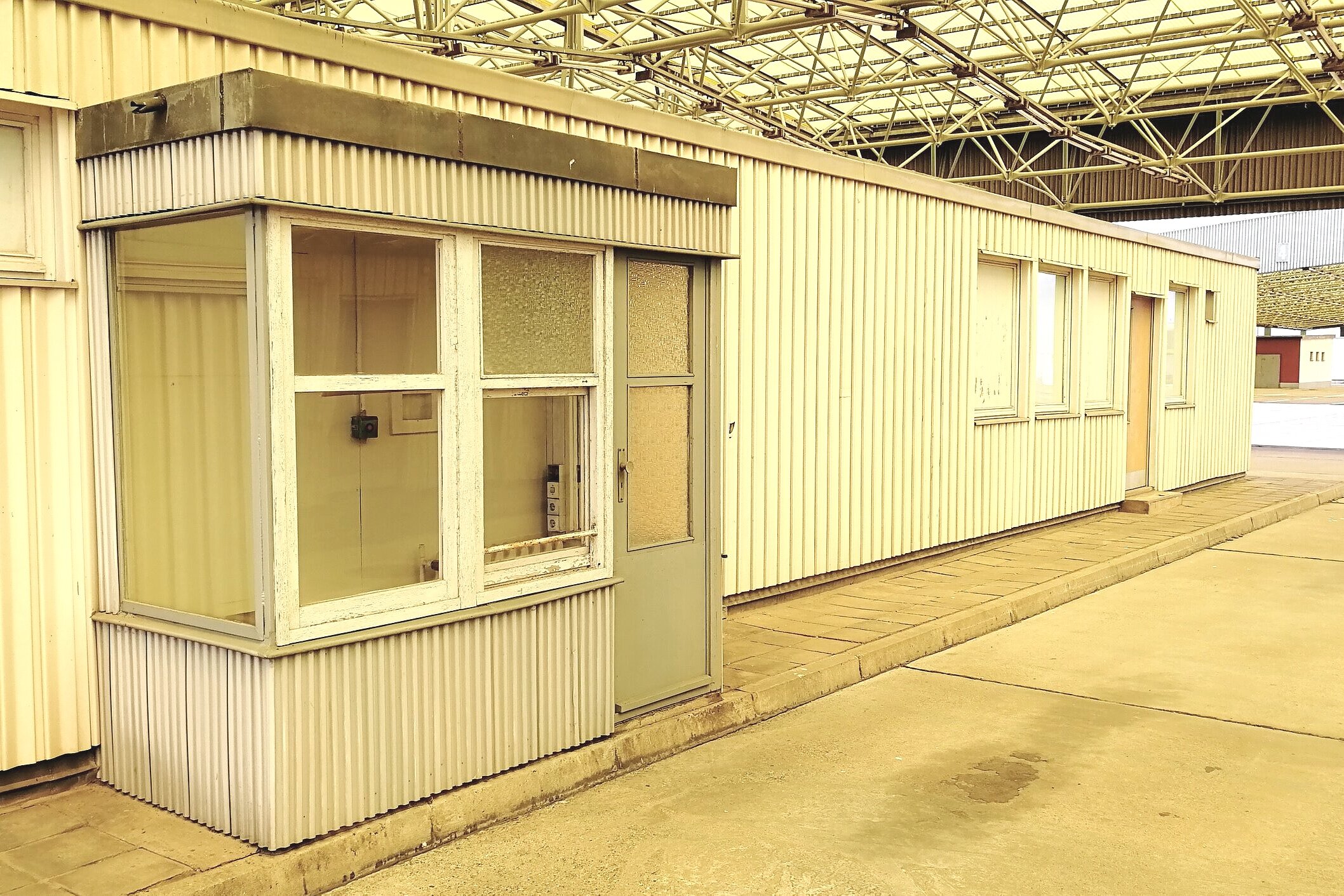Marienborn Memorial: A Reflection on Freedom
Holger Zimmer
Checkpoint Marienborn—where the deadly “Iron Curtain” has been turned into a museum.
Image | Holger Zimmer
I know there are a lot of fans of the German highways. You can go pretty fast here, but if you go too fast, you might miss a poignant discovery. If you drive from the western part of Germany eastwards, over to Berlin, you will probably just whizz over on the Autobahn (highway A2) between Hannover and Berlin. If you don't pay attention you just wouldn't know that at Marienborn was the place where the largest border checkpoint between East and West Germany once existed, right at the so-called “Iron Curtain.”
The majority of cars and lorries traveling from West Germany had to pass through a heavily guarded checkpoint in order to get onto the transit routes towards West Berlin. After which they could enter the GDR (German Democratic Republic, i.e. East Germany) and drive all the way through East German territory.
It is now more than 30 years since the Iron Curtain tumbled, that gruesome border that split Germany, Europe, and even the world, in two camps.
If you pass by today, it might be nice and sunny, and the former guard houses and car lanes merely look like relics from bygone days—relics to be visited and pondered.Back in the days of division, this was all too real and there were probably about a thousand people—troops, border guards, and civilians working at this 24/7 checkpoint in East Germany.
Take a peek at the Marienborn Memorial with German tour guide Holger Zimmer.
For regular citizens of the GDR, Marienborn was off-limits as it belonged to the restricted border area. It was a military zone, not to be seen or photographed by East Germans. Even today, its history carries some secrets hardly known to the public eye.
For example, there was a secret tunnel system, about 6.5km (4 miles) long, creating an underground connection between all the major checkpoint buildings. The tunnel’s 14 different entry points were concealed, with ladders and stairs leading down, 3 metres (10 feet) underground. The command tower was thus linked to the bank, and the bank to the toll station. Also hidden from view, the regime had installed a very secretive listening station, disguised as a telephone switchboard.
The border started after the Second World War as just a small checkpoint between the British and the Soviet occupation zones. But as the Cold War went on and the two German states were divided, it became a proper border crossing between East and West and was reinforced when the Berlin Wall was built in 1961.
Enlarged in the early 1970s, the whole complex even boasted a state-of-the-art, completely independent emergency power supply. Because this border station had to be bright, no matter what time of day or night, the operation consumed enough energy equivalent to a small town of 25,000 people. Floodlights and neon lamps galore illuminated every inch and made sure the guards could more easily detect possible border violators.
Marienborn checkpoint was a sizable complex designed to prevent citizens of the GDR from escaping to West Germany and to quash attempts to bring materials from the West that could influence anyone in the East.
Images | Holger Zimmer
The intention of this checkpoint, along with the whole border regime, stretching about a thousand miles between the two German states, was simple: to stop the citizens of the GDR from leaving their socialist country and finding a better future in West Germany. Leaving was a threat to the administration and thus became a crime that needed to be stopped, in the eyes of the Politburo.
With one single push of the alarm button, the whole border traffic could be brought to a standstill—a mechanism automatically pushed out a 30-ton steel device nicknamed “Fiffi” (doggy) to completely block the whole road within a matter of seconds.
Another device for detecting GDR citizens that might be trying to hide in the crevices of a car was a structure with the secret code-name: "Technik 5" (“Technology Number 5“). Here the GDR had installed a huge box above the road. Unknown to the drivers slowly passing through underneath, each car would be subjected to gamma rays lasting up to 25 seconds per car, creating x-ray images of the whole vehicle in order to catch possible defectors.
Nowadays the little cabins and cheap-looking containers seem worn and shabby with their grey and brown doors, half boarded-up windows. The whole site doesn’t look quite so ominous anymore.




However, even today one can surely feel that this border system was not to be messed with. Up until 1989, this border crossing was frequented by up to ten million people every year. Of the thousand people who worked here day and night, around 600 were employed by the “Stasi” (Staatssicherheit), the GDR secret state police infamous for spying on its own people. Here they were dressed in the uniforms of the East German border guards. Their main task was to check, control and identify about one hundred twenty cars per hour to keep their citizens within the limits of the communist system.
When cars were searched, GDR officials also looked for materials such as newspapers, political magazines, music, and even simple warehouse catalogues that, if found and deemed unfit for East German citizens, were confiscated and generally burned. The idea was that no traces of freedom or diverse opinions should reach the working masses.
Beneath a roof-full of neon, cars waited in line to be inspected.
Image | Holger Zimmer
The main focus of this border was to stop anyone from defecting into the West. Attempting to leave the GDR illegally was a very dangerous undertaking. You might end up in prison for many years...or dead. At the Marienborn checkpoint alone, about ten people lost their lives trying to cross to the West.Nowadays the former crossing between the Free World and the Eastern Bloc, between capitalism and communism, has become a haunting open air museum. Cars drive by without any hindrance, and only those who want to know can make the brief stop to be reminded of the times when traffic and movement of people was not free within Germany. From today's point of view, this memorial of an obsolete border strikes a chord. The people of the GDR pursued change, and through peaceful demonstrations they brought the wall down in 1989. The borders opened, in large part because people longed for and strived to once again be free to speak and travel as they pleased .They just did not want to be imprisoned anymore. One can´t help but think about the fragility of our world and the notion that most of us can now travel freely. This memorial teaches us two lessons: things can change for the better, and we cannot take our freedoms for granted.
Growing up just a few miles from the border in East Germany, I always wanted to know what was happening behind that fence. I learned about travelling by hitchhiking to Berlin, via the GDR. Some of my earliest memories are of passing through those checkpoints. I remember uniformed men wielding power and stupidity. I am eternally grateful that those days are gone and that I can meet with my friends from the former East when and where we like.
Join tour guide Holger Zimmer for a German’s perspective on the Marienborn Memorial.
Gedaenkstaette Marienborn (website)
Marienborn Memorial to Divided Germany (Facebook)
Google Maps
Autobahn 2
39365 Harbke, Germany
open: Mon - SUN 10 am - 5 pm




